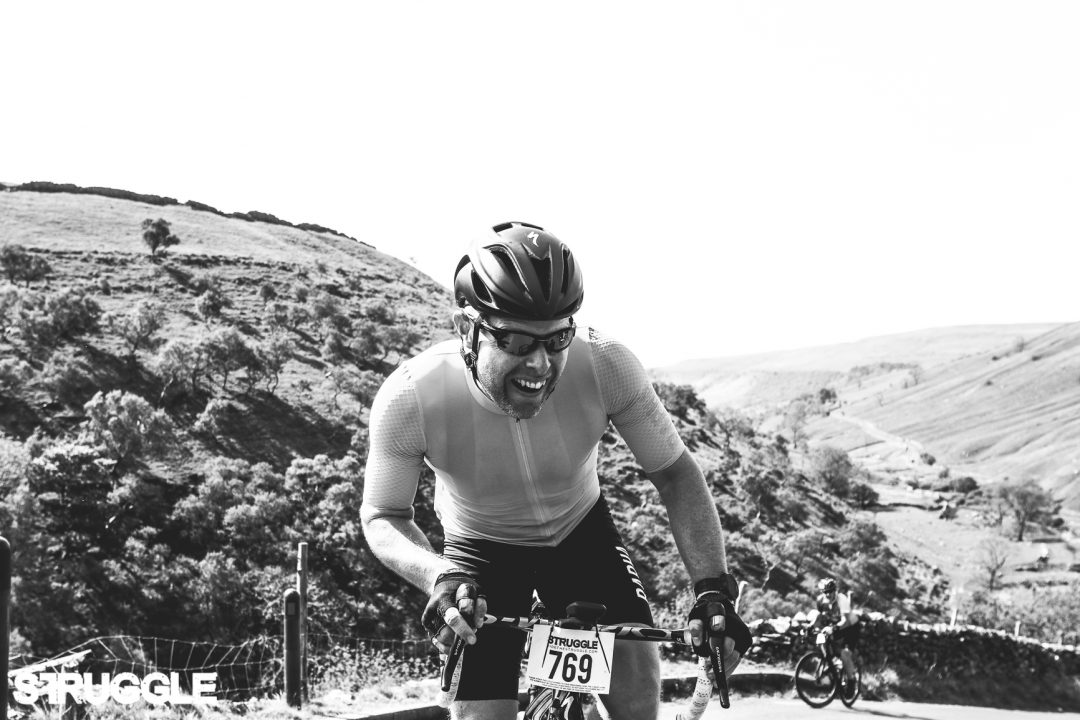Riding a hill-based sportive can be especially challenging and arguably none more so than The Struggle in Yorkshire. Whether you’re a Vitfor user or you’re shaping your own training plan, here are some top tips for taking on a hill challenge.

‘The Struggle Moors’, one of Yorkshire’s toughest rides organised by bike-obsessed couple Matt Manakee and Victoria Tremlin is a real corker! 95 miles and 8,256ft of ascent will challenge even the toughest of sportive riders. But just how would Vitfor shape your training to take on something this challenging?
Craig Stevenson, Vitfor Performance Director, explains “what makes the climbs in The Struggle so challenging is the gradient. You have to pedal hard just to keep moving and as you’re moving so slowly you tend to be at a very low cadence. This can make the climbs really energy sapping and sometimes harder than their European counterparts.”
Your Vitfor training program will prepare you in several ways (and you can use these tips for your own training plan):
- Focus on intensive interval work
These are harder efforts above what you normally sustain for say, 20 minutes. They hurt but really help condition you to having to push hard on those big climbs. By increasing your maximal pace, the relative percentage of how you need to ride the hills on race day will be less, making your life much easier. - Build resilience
It’s one thing being able to smash your pace through 2-3 miles of riding but to still have the legs after 100 miles is something else. As well as having the power and pace for the hills, you need to have the resilience to fatigue for such a big day. A longer ride (3h+) every week will help to get your body used to time in the saddle. - Challenge yourself
Another piece in the puzzle will be the bit you need to do for yourself. To prepare for a ride like The Struggle you need to do training over similar terrain. Ticking off your training rides on an easy route may give you a false sense of security, so make sure you’re challenging your riding ahead of the big day. - Pace your training
Pacing yourself right is just as important in your training as it will be on race day. For most people with a family and working a full-time job, getting in the training you need can be tough. It’s best to spend your training time in the saddle, but there will be times when it isn’t practical to ride your bike or your legs are just too sore. We recommend swimming as a training alternative for many of our elite athletes – it’s a great form of low impact aerobic exercise that won’t tire your legs for the next bike session.

Top Tips to smash your sportive #FTW

Now you’ve done all the training, how do you ensure you go all the way on the day?
- Take the right kit
It sounds obvious but often we see cyclists turning up for a tough sportive without the right gear. From clothing to bike, nutrition to fluids, it’s important to consider what you’re going to need to get you to the end. Read more here on optimising your fuel and hydration. - Pace your ride
In isolation, most riders could easily get over a single climb. But, it doesn’t matter how fit you are, if you get to the base of one of those climbs as a broken cyclist, it’s going to be hard. Remember, when you hit that first hill, you’re going to be in the saddle for several hours and the pace you set should reflect that. - Heavy built cyclists should save pace for the flats
Built for speed on the flats? As a heavier-built rider, it’s natural for you to be slower on the climbs. Pacing is all the more important for you. Don’t try to keep up with the guys that are naturally faster when climbing. Keep your powder dry and reel them back in on the flats with that extra power.
Want to test your mettle on Yorkshire’s toughest hills? Visit www.ridethestruggle.com to find out more.

